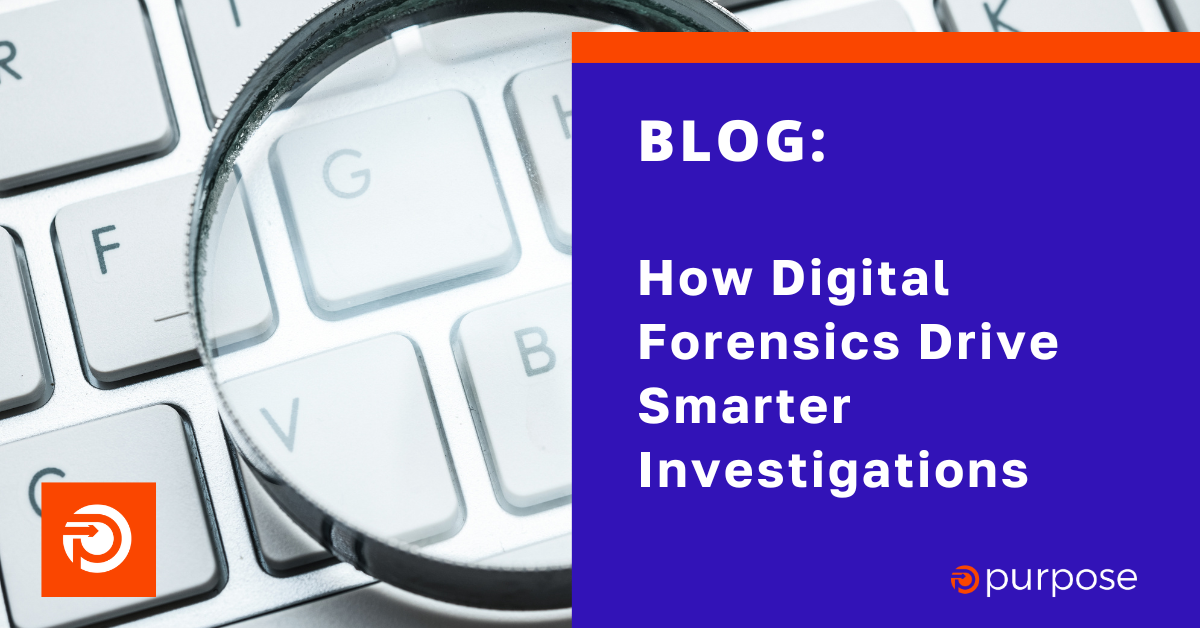By: Steve Davis, VP of Digital Forensics and Investigations
Forensic collection and analysis are the processes of gathering large quantities of data from electronic devices and Cloud based data sources, preserving them, and examining the information. Both law firms and corporations can benefit from adopting digital forensics foundational precepts during investigations and eDiscovery1. Digital forensics can help firms increase efficiency, save time, and undercover the truth when analyzing large quantities of information.
Use Forensics to Work Smarter, Not Harder
During digital investigations, there can be hundreds or thousands of pieces of evidence to comb through. From emails and social media posts to text messages, documents, images, videos, and financial records, a thorough examination is costly and time-consuming.
But it doesn’t have to be. Digital forensics allows investigators and legal professionals to utilize custom technology to gather, track, and analyze data across multiple sources for both collections and forensic investigations. It can be used to resolve disputes, investigate potential internal misconduct, and ensure compliance within an organization.
The digital forensic process uses the power of AI to uncover details that the human eye may miss, such as timestamps and unusual patterns of online behavior. Forensically sound digital evidence assists legal teams in building stronger cases through strategic planning. It is also admissible in court when proper forensic collection and preservation techniques are used.
Evidence Collection
The process of collecting or gathering digital evidence before it is lost or destroyed is known as forensic preservation. Evidence may come from computers, servers, cell phones, cloud storage, or other electronic devices. During collection, it’s crucial that data integrity is preserved to safeguard it for later use. If data is altered in any way, a court may not allow the evidence to be used during legal proceedings.
One way to ensure data security is to maintain a clear and unbroken chain of custody. This proves that the digital evidence has not been altered, illustrating the information’s authenticity and reliability. With digital forensics software, these chains can be completed electronically, ensuring chains of custody aren’t missed or mismanaged due to human error. In an era when practitioners are keen to critique the defensibility of forensic collection methods, attention to detail and robust standard operating standards are a must.
Information Analysis
Use the power of digital forensic analysis to provide early insights into a case. Digital examination reveals concealed or missing information, establishes case timelines, and identifies essential facts that might otherwise be overlooked. It can also pinpoint patterns and find connections across multiple sources. Similar technology has been used by law enforcement to compare information from DNA, ballistics, and fingerprint databases.
With the advent of artificial intelligence, legal forensics is more powerful than ever. AI applies predictive analysis to forensic evidence to reveal new insights, suggest next steps, and predict future outcomes based on historical data patterns. Legal and corporate teams benefit from AI’s insights by identifying possible results and using the information to engage in strategic planning and client communication.
Case Support
When paired with expert forensic experience, digital forensics analysis results in compelling testimony that not only explains the methods used to collect forensic data but also lays out the results of the findings to support legal arguments. Digital forensic evidence is admissible in court when it is shown to be authentic, in good condition, able to withstand scrutiny regarding collection and preservation procedures, and presented within the parameters set by the court.
Benefits of Digital Forensics
Blend the power of advanced forensic technology with human expertise for secure and trusted data that guides informed decision-making. Legal and corporate settings alike derive benefits from utilizing digital forensic and investigation solutions:
- Cost, time, and labor savings
- Simplified workflows
- Secure data preservation
- Court-admissible evidence
- Pattern recognition
- Future outcome analysis
Streamline Workflows with Digital Forensics
Cut down on the time, labor, and expense of examining digital evidence by implementing the assistance of big data analysis tools. AI-driven solutions make data collection, preservation, and analysis faster and easier, pulling information from several sources at once. Taking a prescriptive approach to digital evidence also ensures data is secured, examined, and ready to face legal challenges, giving team members more time to focus on strategy and client satisfaction.



